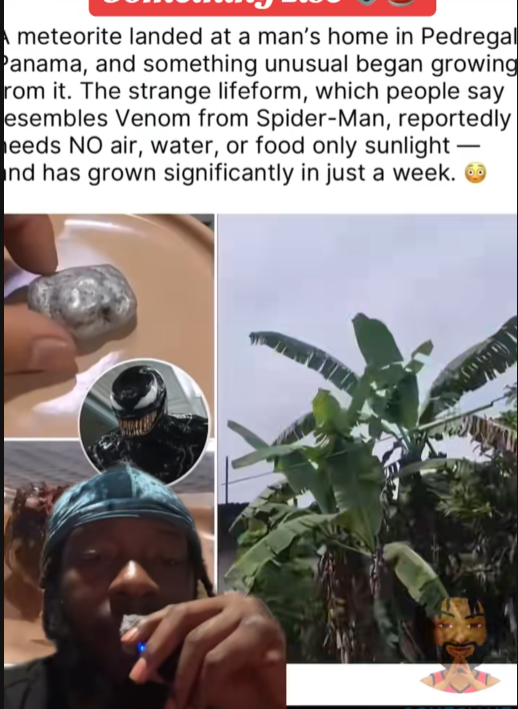When a strange video surfaced online claiming that a meteorite landed in Panama and began “growing” a living creature, social media went wild. Millions of people shared the footage — some calling it proof of alien life, others comparing it to Venom from Spider-Man. The black, writhing mass shown in the clip appeared to move and expand as if it were alive.
But here’s the truth: the so-called “lifeform” didn’t come from outer space at all.
According to scientists and journalists who looked into the story, the object is not organic. Experts say it’s most likely a chemical experiment or polymer reaction, staged to look like something alien. When certain materials — such as resins, oils, or synthetic compounds — react with air or heat, they can twist, bubble, and move in eerie ways. Combined with dramatic editing and mysterious storytelling, it can easily fool viewers.
The original post claimed that the rock “fell from the sky” and that the black substance “needed no air or water — only sunlight.” However, no official records exist of a meteorite strike in Panama during that time. The country’s geological and space monitoring agencies confirmed they received no reports of impact, debris, or cosmic material.
What happened next is a perfect example of how quickly misinformation spreads online. Within hours, the clip went viral — picked up by pages, influencers, and even conspiracy-themed channels. The captions grew more dramatic each time it was reposted:
- “Alien life discovered!”
- “Government scientists are covering this up!”
- “The meteorite is still alive!”
But while the story was fake, the fascination was real — and it says something powerful about human nature.
We are curious beings. We want to believe that the universe holds mysteries beyond our understanding. That something amazing — or terrifying — might be hiding just beyond the stars. And that’s okay. Curiosity is what drives discovery. The key is learning to separate wonder from deception.
Experts recommend a few simple steps whenever you see something unbelievable online:
- Check the source — Is it from a verified science outlet, or just a social media post?
- Look for confirmation — Real scientific discoveries are quickly reported by trusted media.
- Be skeptical of drama — If a video uses suspenseful music, emojis, and exaggerated language, it’s likely for entertainment, not truth.
In this case, the “meteorite creature” wasn’t an alien visitor — it was a viral illusion. But that doesn’t mean the story has no value. It reminds us of how powerful curiosity can be — and how easily wonder can turn into misinformation when facts are ignored.
So the next time you see something that looks too wild to be real, pause before sharing. Ask, “Where did this come from? Who’s confirming it?”
Because in today’s world, the real magic isn’t in the hoax — it’s in the truth.











Leave a Reply